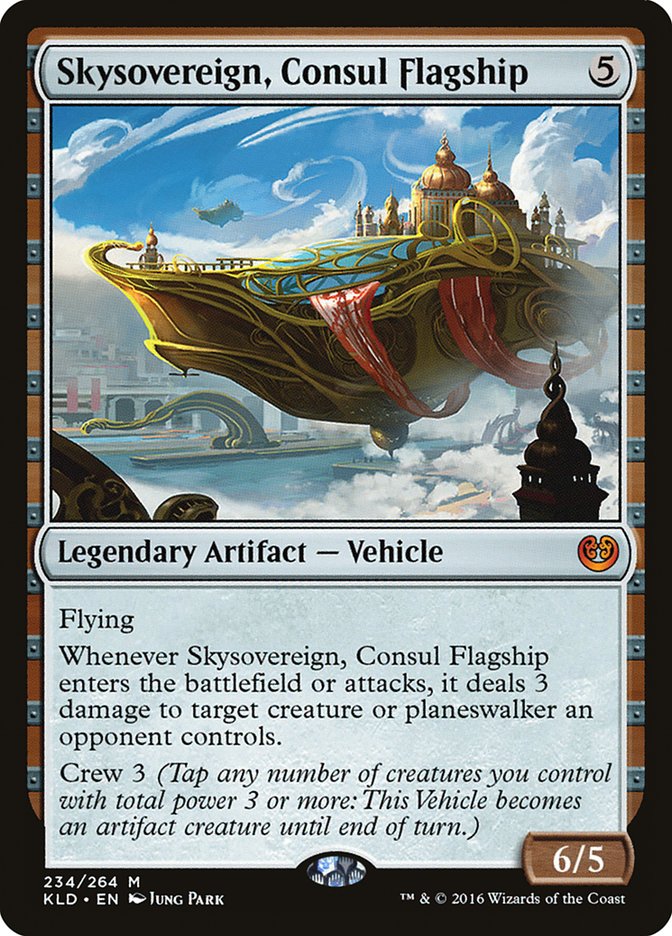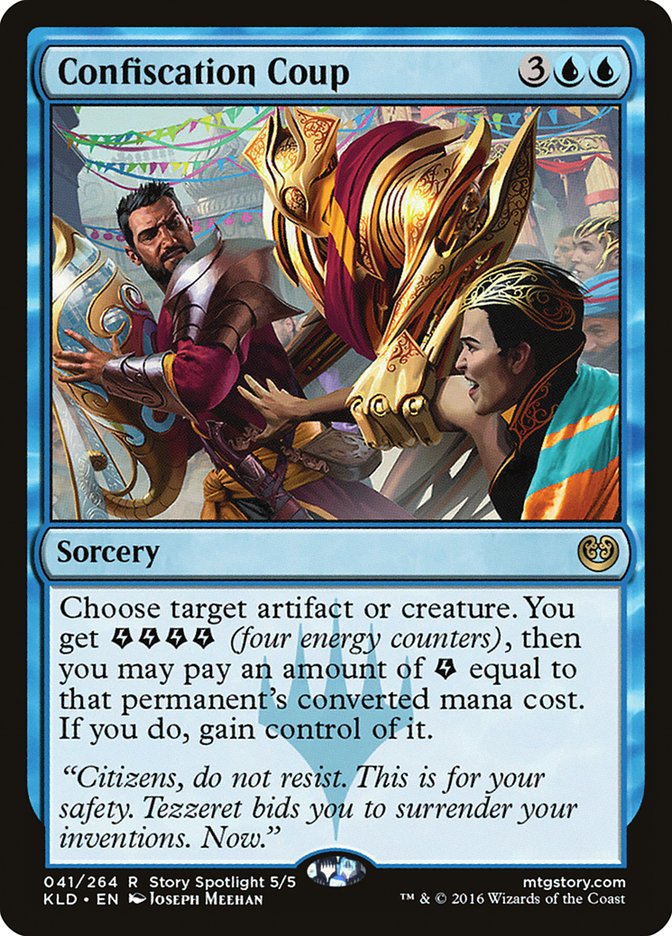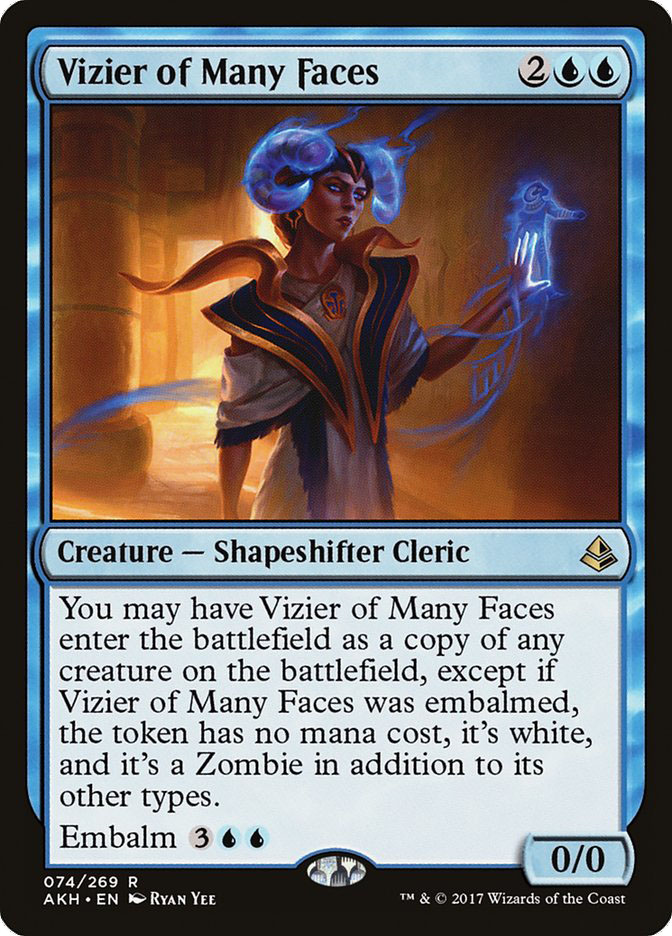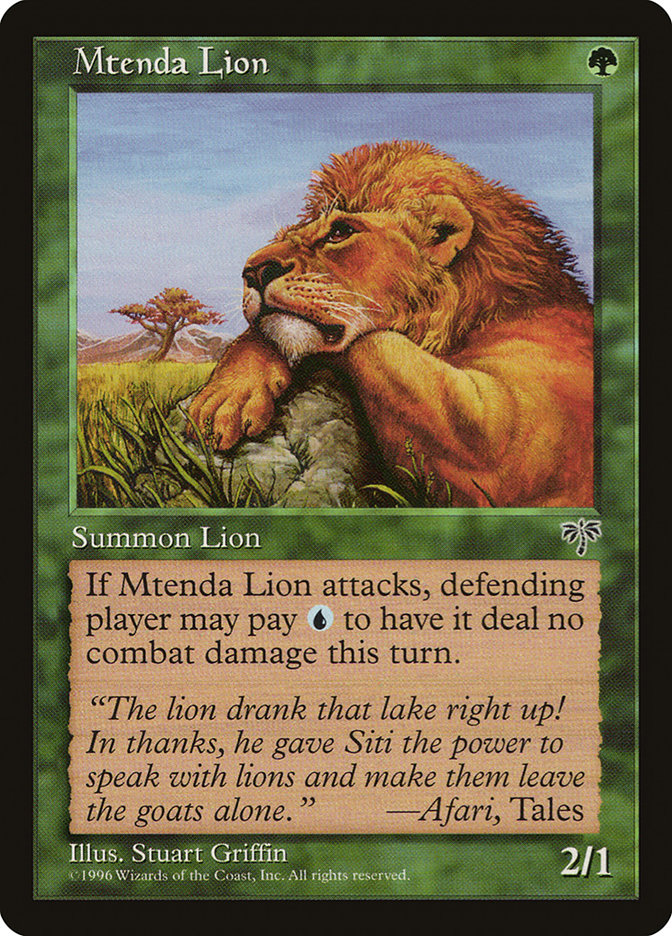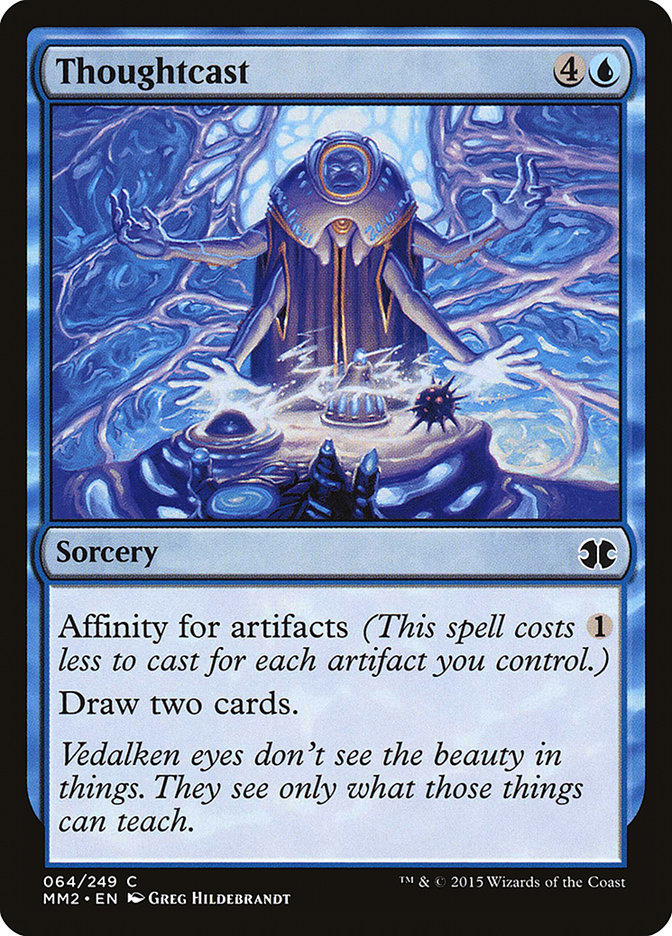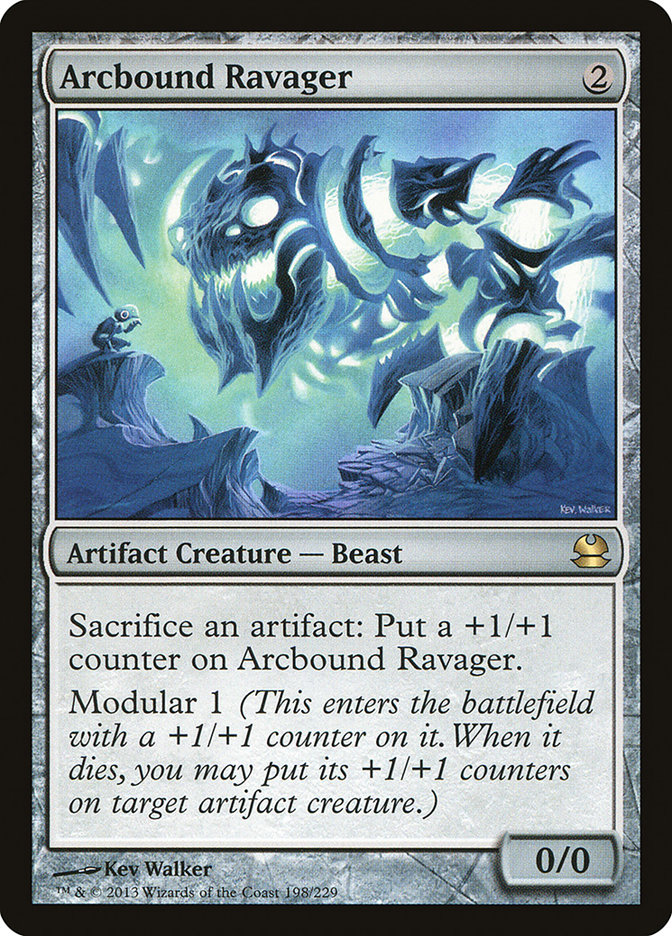Back in July I left for Japan to compete at Pro Tour Hour of Devastation. My team Genesis was in second place and just needed to hold strong. We did so on the back of Seth Manfield as he put himself into the Top 8 and catapulted us to the very first Team Worlds finals.
Why is this relevant, you ask? Well this Pro Tour happened right after the Season One Invitational, which was the last time I played a format that wasn’t Limited or Standard. That’s right: I’ve been stuck in Standard/Limited limbo for the longest time. I would have for even longer if it wasn’t for the fact that Ben Stark is my SCG Baltimore team’s Standard player. Yes, we did play for it in Round 15 of Grand Prix Atlanta.
If that’s against the rules, then I’m clearly joking.
Now, it’s not like I’m straight complaining about playing Standard. Clearly I enjoy the format. It’s just not that fun to do over and over again when it’s this stagnant. It’s also not like I get to escape it altogether either, as half of the upcoming Invitational is also Standard. It’s just nice to know my extended knowledge on the format’s not going to waste. Here’s a few free ones for those who came here for Standard advice.
1) Ben Stark’s “Desert Red” will be worse now that it’s known. Still good against Temur.
Creatures (19)
- 4 Bomat Courier
- 2 Kari Zev, Skyship Raider
- 3 Glorybringer
- 1 Hazoret the Fervent
- 3 Soul-Scar Mage
- 3 Sand Strangler
- 3 Rampaging Ferocidon
Planeswalkers (3)
Lands (25)
Spells (13)

2) Playing more Chandra, Torch of Defiance maindeck than Bristling Hydra is stupid. Seriously, CFB?
3) Don’t play Skysovereign, Consul Flagship, as Negate’s becoming more popular in the Temur mirror.
4) Bring in Chandra’s Defeat in on the draw in the Temur mirror. Only two. Wait, no. Play three.
5) Confiscation Coup is better against Ramunap Red than Glorybringer.
6) The Scarab God is not as good as it once was. Splashing for it has become more of a liability than a boon.
7) Vizier of the Many Faces is a messed-up Magic card in the Energy “mirrors.” Even against Sultai. Running two or three is a must.
So after four months of straight Standard and Limited preparation, I find myself once again diving into Modern. Now, last time I did this, things worked out well. I sifted through all the decklists and found myself liking the look of Grixis Death’s Shadow. Little did I know that the deck wasn’t super-popularized yet, at least not in live events. I took it to the Modern Open in Baltimore and sliced through that event just like Ben, Brian, and I will this weekend.
I kept on playing that deck through the Season One Invitational, but things didn’t go as well for me. I ended up going 2-2 in the Modern portion, and even my wins were struggles. The metagame adapted to the deck, and it just wasn’t as good as it was a month or two earlier. That’s really how things go in Modern. A high-powered deck shows up and catches the metagame off-guard. The metagame then reacts, causing the new “deck to beat” to become beaten. I believe it was Mufasa who said it best: “All decks will eventually die, and become eaten by the antelopes, thus completing the cyclical nature of Modern.”
Jumping back into Modern after an extended absence is rather daunting. There’s the “play what you know” strategy, but what happens if the decks you’re familiar with aren’t well-positioned? You can emphatically test the “best deck” at the time, but the paranoia of being less knowledgeable can be quite real. Not only will the metagame be adapted to the strategy, but also those who have a deck they’re familiar with will almost assuredly be comfortable in that matchup. It could be your first time in the matchup, making it difficult to know everything that could possibly happen, especially their specific sideboard strategies. The whole ordeal is just stressful! Especially when every deck will be present regardless of metagame predictions and recent tournament results. What is a person to do?
I’m Actually Asking
No, seriously, what am I supposed to do? This isn’t a joke or a great lead into how wise I am as I now show you the answers. I’ve done relatively badly in this format ever since its creation, and I have only this week to prepare myself! I guess we can pretend I do know what I’m talking about, and assume what I’m about to say is correct. If anything, it’s at least what I’m actually doing, so there’s that.
Step one is identifying what’s happened since I’ve been gone. There’s no point in just jumping into the Magic Online queues until I’ve done some research. When I left Modern, it seemed like Eldrazi Tron, U/W/X Control variants, and G/R TitanShift were starting to become popular as reactions to Grixis Death’s Shadow. That made sense, as the best way to exploit the deck was to make sure you had powerful topdecks. From there it seemed like U/R Gifts Storm started showing up as a reaction to those decks.
Creatures (7)
Lands (18)
Spells (35)
- 4 Sleight of Hand
- 4 Serum Visions
- 1 Peer Through Depths
- 4 Gifts Ungiven
- 4 Desperate Ritual
- 4 Remand
- 3 Grapeshot
- 4 Manamorphose
- 4 Pyretic Ritual
- 1 Apostle's Blessing
- 2 Past in Flames
Sideboard

It took some time for this combo deck to gather some steam, but once it started picking up in popularity, the metagame once again reacted. Jeskai Control decks put down the Gideon of the Trials which were great at dealing with Death’s Shadows and instead started maindecking cards like Geist of Saint Traft and Spell Queller to compete with the more combo-driven decks. Jund and Abzan started picking up as well, as they were designed to fight off combo decks in the first place. Even today we see new decks like Five-Color Humans showing up with maindeck Kitesail Freebooter and Meddling Mage to absolutely crush the U/R Gifts Storm matchup.
Creatures (37)
- 4 Meddling Mage
- 4 Noble Hierarch
- 4 Champion of the Parish
- 4 Mayor of Avabruck
- 4 Thalia, Guardian of Thraben
- 4 Mantis Rider
- 3 Reflector Mage
- 4 Thalia's Lieutenant
- 2 Thalia, Heretic Cathar
- 4 Kitesail Freebooter
Lands (19)
Spells (4)

So with this brief history lesson of the format in the books, let’s put together a list of decks from most likely to see play to least likely. Keep in mind my information excavation was much more inclusive, but nobody has time for the complete run-through. Also, it’s worth noting that this weekend is a team event which means only one person from each team will be playing Modern. This most likely will mean each team will have someone who knows what they are doing in the format.
Any team that has me playing Modern is either really good, or really stupid.
• Humans
• Affinity
• Grixis Death’s Shadow
• U/R Gifts Storm
• Jeskai Control/Tempo
• Eldrazi Tron
• Jund/Abzan
• G/B Tron
• Dredge
• Jund Death’s Shadow
• Burn
• Counters Company
• Eldrazi and Taxes
• Elves
• Lantern Control
So now that this is my expected list of decks I’ll play against, Jund seems completely out of the question. Sure, I may have made my millions being Jund Guy, but those days are in the past.
Creatures (16)
- 4 Dark Confidant
- 4 Tarmogoyf
- 2 Scavenging Ooze
- 1 Olivia Voldaren
- 1 Huntmaster of the Fells
- 3 Goblin Rabblemaster
- 1 Hazoret the Fervent
Planeswalkers (4)
Lands (24)
Spells (17)

I’ve become a more sophisticated person ever since my win in Baltimore with Grixis Death’s Shadow. Winning a tournament with Snapcaster Mage just does that to a person, you know? There’s also the fact that, if this is the metagame I expect, Jund would only have good matchups against Humans and U/R Gifts Strom. The deck’s slightly behind against Affinity, bad against Grixis Death’s Shadow, and horrible against Jeskai or Eldrazi Tron. Abzan doesn’t even look that much better. It would get access to Stony Silence and does have a better Grixis Death’s Shadow matchup, but at the cost of losing points against Humans and U/R Gifts Storm. Midrange just doesn’t look well-positioned right now. I guess that’s why we haven’t seen it come roaring back as a response to Humans and U/R Gifts Storm.
Now all I would personally want is to play Thoughtseize and Tarmogoyf. I even discussed that with Brian Braun-Duin this past weekend before I did any of this research, as it looks like a good choice on the surface. That’s just not how Modern works, as it always seems like you never have the full picture when preparing for the format. Even today, after I’ve looked at every decklist from every event played in the past three months, I still don’t fully understand what’s going to happen.
So what now? My “bread and butter” in the form of B/G Midrange is off the table. Besides Jund/Abzan, I’ve only really played with Eldrazi Tron, Infect, Grixis Death’s Shadow, and Death’s Shadow Aggro. Two of those decks got “banned” with Gitaxian Probe, so that leaves me exploring one of two options.
Creatures (16)
Lands (18)
Spells (26)

Now, Korey McDuffie’s no stranger to competitive Magic, and he’s one I’d blindly listen to when it comes to a deck I haven’t played in the longest time. That said, his list looks extremely stock, making me believe he may very well be in a similar situation as I’m in. Grixis Death’s Shadow is a very impressive deck, but I’m worried it’s not what it used to be. The games are tougher now that everyone’s aware of it, plus the sideboard isn’t as easily constructed given all the bad matchups. “Back in my day” there were so many colorless decks that running only two Ceremonious Rejection was ludicrous! Not just that, but players have specific cards for the matchup. Even Mirran Crusader can be found in sideboards!
I’m good at Magic, but even I feel like I’m not good enough to pilot this deck efficiently. Maybe I’m being hard on myself, but since the Open I won with the deck, I haven’t done well with the strategy. Every match feels tough, and no longer does 75 cards feel like enough, as I always feel like I’m missing key cards for certain situations. That’s the sign of a deck being hated on too much, or honestly just what every midrange deck in this format feels like. Seriously, I’m starting to think these style decks are perennially bad choices after their initial boom into the format has concluded. They always feel so close to being perfect, but sadly not close enough.
So what about Eldrazi Tron?
Creatures (20)
- 1 Wurmcoil Engine
- 1 Ulamog, the Ceaseless Hunger
- 2 Endbringer
- 4 Reality Smasher
- 4 Thought-Knot Seer
- 4 Matter Reshaper
- 4 Walking Ballista
Planeswalkers (3)
Lands (24)
Spells (13)

Dan Musser’s been championing this deck for some time now. Even after Todd Stevens abandoned his pet deck for greener pastures, Dan’s stuck by it. Now, I spent some time playing this deck on Magic Online, and boy did I win treasure chests. I think I ended up going 23-2 before I had to start preparing for upcoming Standard events.
The deck’s clearly good, even though it looks like a mess, but how much skill edge am I giving up by playing it? That’s an important question to ask, as this deck is not the most difficult to play with or against. Often it comes down to how powerful of a start Eldrazi Tron can have, and whether they draw the hate cards or race the powerful engine in some way. Should I really be putting my eggs in this basket, especially when my teammates are Brian Braun-Duin and Ben Stark? We really can’t talk smack on social media and not back it up!
How good is this deck anyway? Its Affinity matchup isn’t particularly great, and it does play maindeck Chalice of the Void for Storm. Plus, Scapeshift doesn’t seem like it will be highly played! That said, I don’t like the Grixis Death’s Shadow matchup, and my gut tells me Humans has a field day with it.
Now, I keep bringing up the fact that Affinity isn’t actually bad against anything. Why not play Affinity, then? The truth is many pros have a disdain for the deck. That’s due to how easily sideboard cards become equalizers against the strategy. It’s really tough to play a deck like Affinity when you believe you have a skill edge against most of your opponents. That’s also not taking into account this is a team event.
Usually you need an 83% win percentage to get into the single-elimination rounds of any tournament. Team events are different, as you could go undefeated if everyone on the team only had a 66% win percentage, so an individual win percentage can theoretically be lower.
Now, you don’t want to put much stock into this logic, as the main reason why we see the same teams do so well each and every time is they aren’t only winning 66% of the time. It’s higher than that, and the structure of team events will amplify their results as two members have to lose in the same round to actually pick up a loss. So even though I wouldn’t have to personally win as much to still potentially succeed, that doesn’t make this sound logic to go by. It sounds more like I’m trying to convince myself that Affinity is a better choice than it actually is.
Honestly, that’s what most of this is. Everyone, including me, tries to parse together information trying to make sound decisions, but it’s often tainted in some way. We often resort to honing in on something specific to justify whatever decision we simply want to make, and sometimes that’s just making a decision easier.
Deck familiarity, metagame positioning, underestimating competition, overestimating competition, enjoyment level, outside judgment, content influence, and (my all-time favorite) being given access to a sideboard guide…I can go on all day trying to logic out what I should play this weekend, but in the end there’s no way of knowing if I’m making the best choice. It’s better for me to spend all week on one deck, making sure I know how to play it well enough, even if it’s something I already have experience with. Maybe I can give up on one or two decks early in the week, but I’d need to make sure I have enough lead time to at least not make a fool of myself if I end up playing a completely new deck I’ve never practiced with.
This struggle is as old as Magic itself, yet there really isn’t a “Who’s the Beatdown” to encapsulate this conundrum. What I’ve learned and taught others when asked about this topic is to always go with your gut. In fact, it’s common for me to pull a coin out of my pocket when someone has a choice between two decks and make them randomize their decision. Once the coin falls, I ask them if that’s what they wanted to happen. For whatever reason, our brain is hardwired to react to the coin’s decision. The person’s reaction always makes the decision for them, as their gut reaction isn’t complicating things.
Do this next time you or someone you know is in a similar decision. I guarantee you it works!
In the end, I don’t have any wisdom on what to play this weekend. I still don’t even know what I’ll end up playing. Maybe I’ll go off the wall, or maybe just pick up Affinity hoping I have my “A” game. I guess, if I am playing great, I should just bring Grixis Death’s Shadow. Anyway, the point is I’m just some dude that’s played four months of Standard and all of a sudden has to jump into one of the densest formats in Magic. I do, however, understand how biased one can get when making a decision as difficult as what to play in this format.
The point to this article, for those who are still unsure, is that biased decision-making is easily masked by false logic. Often it’s very difficult to see. I spent an entire article writing about my method to finding a deck, and I didn’t even come close to solving something!
That’s because it’s impossible in Modern.
That’s what makes it so important that you don’t buy into anyone’s false narratives, even your own. It’s vital to constantly try to prove yourself wrong so that sometimes you can be right.
Smooth ending, if I say so myself! Really ties the whole article together, and makes it seem like I know what I’m talking about, even though I have no clue. Is Eldrazi and Taxes any good? What about Counters Company? I really need to win this tournament, as Ben and I have been smack-talking on the Internet. Really have to do that whole “bite with the bark thing.”
Come get us, Baltimore.


